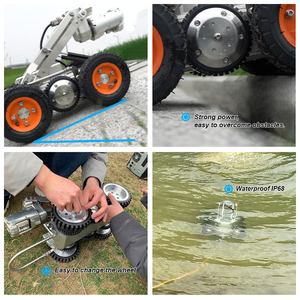
All categories
Featured selections
Trade Assurance
Buyer Central
Help Center
Get the app
Become a supplier

(136 products available)














































Schroder inspection cameras are very effective since they help people see through difficult areas. Their tiny sizes help them fit into the smallest of spaces, with a large visual system allowing for a high-quality view. These cameras are optimal for various activities, like checking moving pieces within machines or looking inside pipes without damaging anything.
Here are the types of Schroder inspection cameras:
Wireless inspection cameras
They can stream footage directly to any device, removing cords from the discussions. They give users more leeway in where they can move the camera, great for remote work or ease of use. In areas where control and observation are important, these cameras are excellent tools for utilization.
Rigid inspection cameras
These cameras are not flexible, enabling users to work in tight spaces. Convenience can still be found in the hard-to-reach areas, even without flexibility in the design of the camera. Visible images of internal machine components, intricate wiring, or blocked pipes are captured.
Articulating inspection cameras
Devices with flexible tips at the end that allow bending into certain shapes for capturing images in difficult or tight regions. Such cameras provide an excellent viewpoint, even in difficult spaces, and the flexibility they add is quite beneficial to the users.
7-inch monitor inspection cameras
Scoped tools with large screens for easy image observation during inspection sessions. All the details can be observed on the large screen, making the inspections more efficient. This camera is good for mechanical inspections or assessments of inner spaces to ensure the clients have the best viewing experience possible.
In the mechanical industry, they have become important for undertaking internal maintenance checks of machinery through non-invasive means. The degree of detail that can be viewed with these cameras makes them essential when analyzing intricate parts, hence ameliorating maintenance schedules by allowing users to diagnose and fix problems more efficiently.
These inspection cameras check pipes and plumbing systems from the inside. They find blockages or leaks and help fix them without using old methods, like digging. They help workers finish plumbing jobs faster and with fewer mistakes caused by guesswork. Everyone benefits from using these cameras in plumbing–the workers and the homeowners.
Systems that help check building structures from the inside by locating possible problems in hard-to-reach areas. They can offer clear observations of internal structures, thus allowing early detection of potential issues. This clarity in colocation helps minimize excessive costs, curtails on-time repairs, and ensures safety.
Automotive industries also employ industrial endoscopes for analyzing areas inside engines, exhaust systems, and other car parts. Inspections are then further facilitated by the cordless design, which allows quick checks without driving dismantling. This practice supports better service delivery in garages and ensures reliable vehicle health checks.
Popular tool among inspectors for assessing walls, ceilings, and other areas around the house without breaking in. Their ability to pinpoint problems early on reduces the need for major overhauls within the inspection area. This early detection can also cut costs and improve the general safety of homes.
Selecting an inspection camera from Schroder requires knowledge of key features that will meet various inspection demands. Consider the camera's resolution because a clearer picture makes it easy to spot issues. A flexible camera can easily reach difficult spaces, while a sturdy, waterproof model is essential for moving work outside.
Further, select one with suitable lighting to illuminate dark areas properly. If working in tight spaces, a compact camera will be better. If customers will be using it for a long time, getting a camera monitor with higher comfort levels is good. By weighing all these factors and matching them with the application needs, customers can achieve effective inspections using the camera.
A1: The typical battery endurance of an inspection camera is about three hours, allowing work in places without outlets.
A2: Yes, if the model is wireless, it connects to smartphones or tablets by transmitting live video feedback.
A3: Yes, plumbing professionals use them to check for clogs or leaks inside pipes without tearing the system apart.
A4: Most inspection cameras have LED lights near the tip to light up dark corners and give a clear view.
A5: Many models come with a seven-inch monitor that is portable, allowing easy viewing while inspecting.